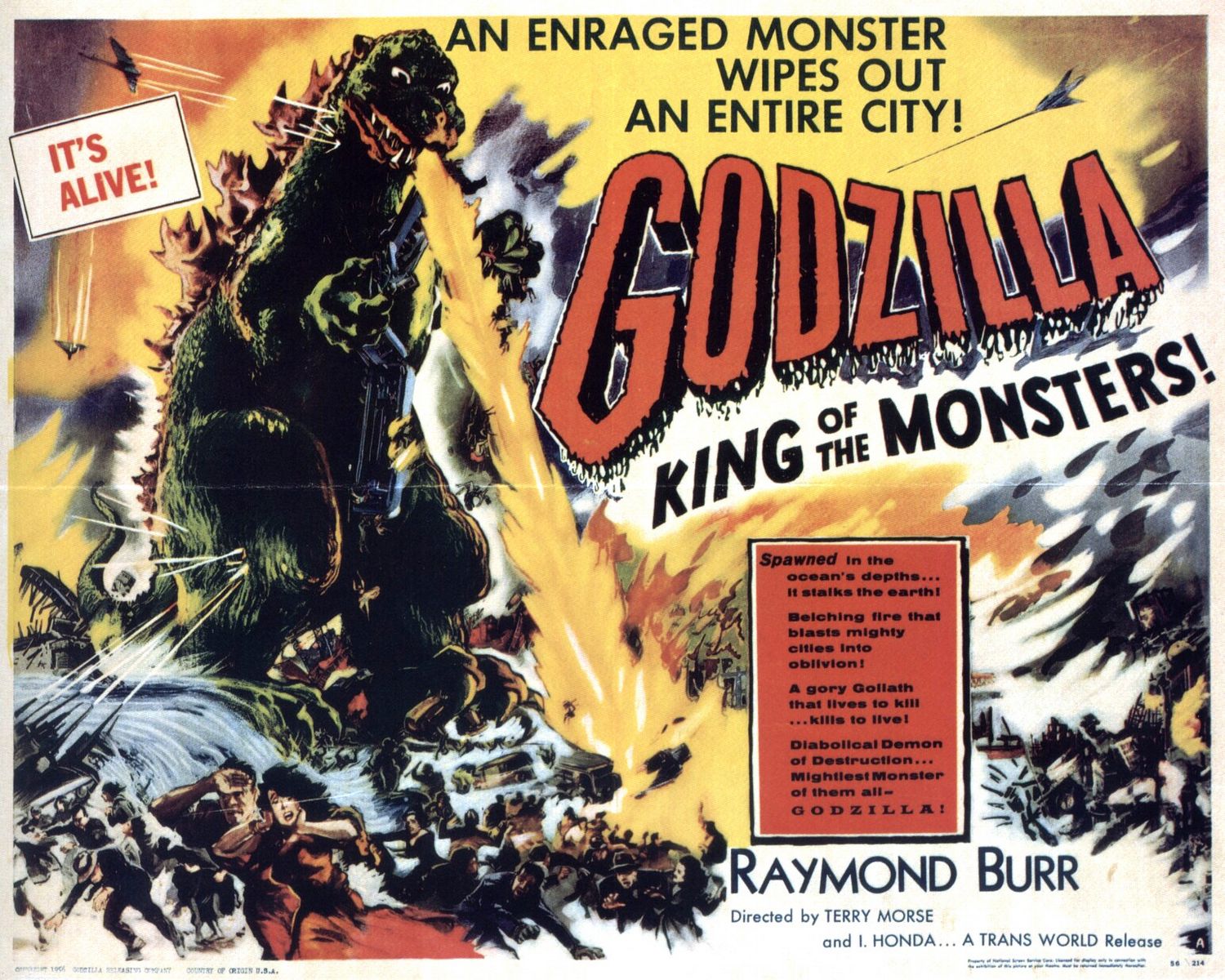5 Classic Godzilla Movies With Monstrously-Awesome Leading Ladies
*Godzilla noises*

Guillermo Del Toro’s Pacific Rim took the world of fandom by storm. Despite predictably starring a white guy, it was Rinko Kikuchi’s Mako Mori who sparked the imaginations of fandoms worldwide. Her take-no-guff attitude and the platonic relationships she developed with her two male co-leads for a breath of fresh air in a blockbuster landscape where women all too often are relegated to being sexy lamps (*coughTransformerscough*).
A year later, Hollywood offered audiences another round of giant monster-mashin’, but those enamored with Mako’s adventures were probably a bit let down with Gareth Evans’ Godzilla. Although it earned enough money to quickly secure two sequels, its levels of representation were a bit… off. The three women in the 2014 Godzilla exist to respectively a) get fridged, b) look at a TV set all worried-like, or c) tell us that Ken Watanabe is super right, you guys. Why even hire powerhouses like Juliette Binoche, Elizabeth Olsen and Sally Hawkins if that’s what you’ll have them do? Sure, it was probably a nice and easy paycheck for all three ladies involved, but damn it, Godzilla movies should be better than this!
Wait, what? That’s right! There’s quite a few classic Godzilla movies from Japanese mother studio Toho that have either non-traditional gender role fulfilling female protagonists or side characters (though, in fairness, also quite a few featuring eye-roll inducing fainting damsels and the like). Let’s check ‘em out!
Now, you may feel a slight trepidation at jumping into a series that spans sixty years and thirty movies. You may trepidate even more at the thought of starting it at random! What kind of madman would recommend an entry from 2000 if the series proper started in 1954?? In theory, I could tell you there are three eras of Godzilla, named after the Japanese eras in which they were predominantly made: Showa (1954-1975), Heisei (1984-1995) and Millennium (1999-2004)*.In theory. The reality is that there’s little to no continuity from film to film. The Showa and Heisei films are separate continuities on paper, but only the Heisei ones have some form of throughline (as in, recurring characters not called Godzilla). The Millennium films even go so far as to be officially separate from one another, each and every one only acknowledging the original ’54 Gojira as the only other movie in their little continuity.
If we were to put it bluntly:
- The Showa era (’54 – ’75): “Oh damn, this movie made money… let’s throw whatever at the wall and see what sticks until it doesn’t anymore!”
- The Heisei era (’84 – ’95): “We must bring back a Japanese icon and create a series of films portraying us as a nation struggling with a recurring menace like Godzilla!”
- The Millennium era (’99 – ’04): “Oh man, that American version sucked really hard! We should show ‘em that ANY Japanese director can do it better! Heads up, now taking all comers!”
Awesome as it sounds, Japan has never actually known a “Millennium era.” In fact, we’re still in the Heisei era, historically, but Toho just needed a clear delineation between their latter two Godzilla series. With this lumbering atomic monster of a preamble in mind, which Zillas should you check out for some giant monster action that puts the representation of women in Godzilla (2014) to shame?
Feminist bonus character: anti-Godzilla team head scientist Professor Yoshizawa is played by series veteran Yuriko Hoshi. Many latter-day Godzilla movies took actresses who portrayed faithful wives, sexy islanders, or the occasional spunky reporter in Showa films and made them STEM professionals or high-ranking politicians in the Millennium era.
Our lead here is the first lady mecha-pilot of the series (though the Heisei MG had a female co-pilot) with yet another Godzilla-induced personal trauma. Unlike Kiriko, however, Akane Yashiro (Yumiko Shaku) is reviled by her colleagues because of a bad judgment call during an anti-Godzilla raid which caused the death of quite a few soldiers. She finds solace in her conversations with Sara (Kana Onodera), the young daughter of a technician, who lost her mother to Godzilla and is currently flipping burgers (??) at the base. This new MechaGodzilla project (dubbed “Kiryu”) could very well be the thing to restore Akane’s honor and get her out of her funk!
Though Millennium films were all stand-alone, GAM had a direct sequel in the form of Tokyo SOS. While a lovely film filled with kaiju feelz (no, really!), Shaku only briefly reprises her role as Akane in it. This is because Toho often used Godzilla movies as testing grounds for actors, only for them to be given “more serious” projects down the line if audiences responded well.
Yup, Mothra has it all… except for plot variation! True, there’s only so many tales of giant monsters you can tell, but Mothra’s unique life cycle really limits writers’ options. With this in mind, tread carefully! Mothra vs. Godzilla repeats many of the same beats of the originalMothra, with added random Godzilla in there. GvM, on the other hand, manages to mix it up slightly with dark twin Battra and his mysterious motivations.
Now go hit the Netflix or the Amazon to get that giant monster fix, if you are so inclined! They may be cheesy, they may be silly, but Toho’s Zilla/Mothra movies have a lot of heart, and are currently a billion to one when it comes to female representation with regards to their American counterparts.
Luca Saitta co-wrote Memories of Monster Island, a humorous journey through the Godzilla movies, blogs at Wholly On The Level, and tweets like a baby Rodan @servantofdagon.
Are you following The Mary Sue on Twitter, Facebook, Tumblr, Pinterest, & Google +?
Have a tip we should know? tips@themarysue.com